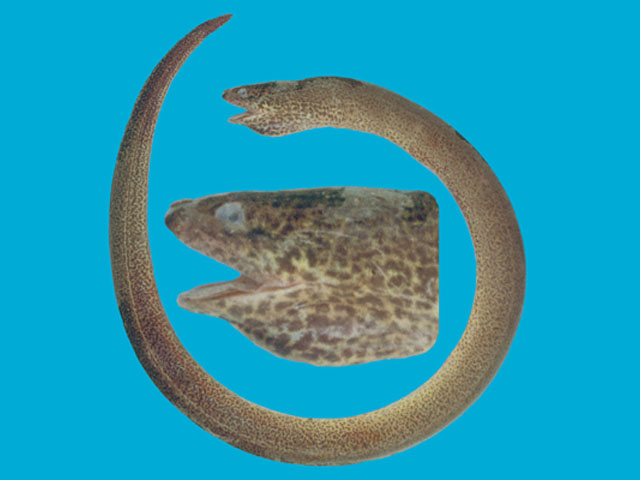| Synbranchidae (Swamp-eels) |
| 150 cm TL (male/unsexed) |
|
demersal; freshwater; brackish, potamodromous |
| Central and South America: Mexico to northern Argentina. |
|
Body cylindrical and long; eyes small; dorsal and anal fins vestigial (Ref. 26543). |
| Anguilliform, has no pectoral and ventral fins; its dorsal and anal fins are vestigial (Ref. 27188). Adults inhabit streams, ponds, canals, drains, rice fields, both clear and turbid water (Ref. 11225). Nocturnal (Ref. 11225). Carnivore (Ref. 26543). The male guards and builds nest or burrow (Ref. 205). A protogynous hermaphrodite (Ref. 55367). Its being a facultative air-breather (Ref. 1468) explains, at least in part, why it is often missing from faunal inventories. At the start of the dry season when there's a decline in water level, it digs a tubular burrow in a bank or on the bottom. This burrow, which is for the most part sub-horizontal , can have several diverticula, followed by a vertical section which leads to the exterior by only one opening. Although breathing is slowed down, the fish remains active and flees if it is disturbed (Ref. 27188). |
|
Least Concern (LC); Date assessed: 28 March 2018 Ref. (130435)
|
| harmless |
|
Mostly recorded from south of the Northern Range. |
Source and more info: www.fishbase.org. For personal, classroom, and other internal use only. Not for publication.

